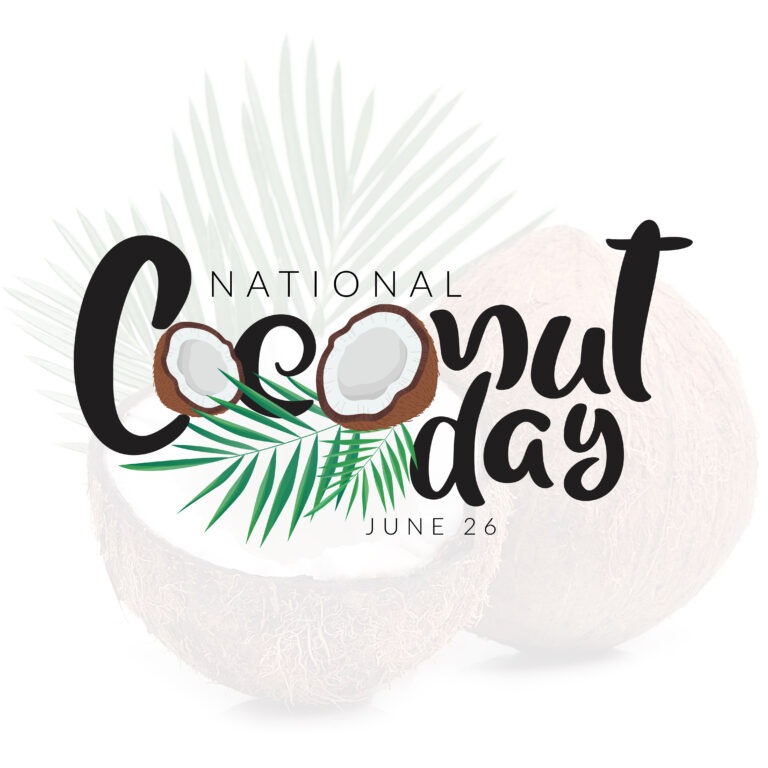5 Reasons to include coconut in your diet
By Susan Hewlings, Ph.D., R.D., Director of Scientific Affairs Nutrasource/GRAS Associates
While coconuts have been the target of much nutrition misinformation over the years, their undeniable health benefits have shed new light on the advantages to adding coconut to the diet. Coconut comes in a variety of forms from water to milk to oil to flour, allowing for a variety of creative ways to add coconut to a healthy diet. While it may be easier than ever to add one or more of the many forms of coconut to one’s diet, consumers may still be confused by some of the misinformation surrounding this versatile healthy global food. Here we discuss 5 reasons why it may make sense to include coconuts in a healthy diet.
- Coconuts are a healthy source of saturated fats
Not all saturated fats are the same. While coconut oil is made up of about 92% saturated fats and 9% unsaturated fats. The shorter chain saturated fats found in coconuts differ from the saturated fats in animal fats. The fats in coconut oil are 65% medium-chain and predominantly (~48%) lauric acid (C12).1 The fats in butter and animal fats are longer chain and include palmitic C16. 0 and stearic acid C18.0. The short chained Lauric acid has different, more beneficial, effects on health and therefore should not be classified the same as saturated fats contained in butter and animal fats.2
- Coconuts support global economies
Coconuts not only provide food to communities worldwide but they are also an important source of fiber, timber fuel, oil and medicine.3
- Coconuts are a good source of antioxidants as well as other nutrients
A recent systematic review reported the endocarp and coconut water are high in antioxidants that can help prevent cells from oxidative damge.4 In addition, coconut is a good source of potassium, magnesium and other nutrients.5
- Coconuts are sustainable
The coconut crop is said to provide sustainable agriculture supporting the three pillars of society, economy, and environment.6 It is an excellent crop to support the current trend of upcycling. This is a process in agriculture whereby substances that were considered waste products from processing of foods are used as a source of a variety of nutrients such as fiber. For example, residues from the extraction of coconut oil and coconut milk are high in fiber and can be used to add fiber to breads and other foods.7
- Coconut flour is a great source of fiber, is gluten free and gut friendly
The addition of dietary fiber from coconut by-products to other foods like bread can provide foods with a low glycemic index and a high amount of short-chain fatty acid such as butyric acid, potentially making them ideal to support gut health. Adding fiber from coconut milk or coconut oil residues increased the fiber content of bread by 57 to 76%. 8
References
- Dayrit, F.M. Lauric acid is a medium-chain fatty acid, coconut oil is a medium-chain triglyceride. Philipp. J. Sci. 2014, 143, 157–166.
- Eyres, L.; Eyres, M.F.; Chisholm, A.; Brown, R.C. Coconut oil consumption and cardiovascular risk factors in humans. Nutr. Rev. 2016, 74, 267–280.
- Chan, E.; Elevitch, C.R. Cocos nucifera (coconut). Species Profiles Pac. Isl. Agrofor. 2006, 2, 1–27.
- Lima, E.B.; Sousa, C.N.; Meneses, L.N.; Ximenes, N.C.; Santos Junior, M.A.; Vasconcelos, G.S.; Lima, N.B.; Patrocinio, M.C.; Macedo, D.; Vasconcelos, S.M. Cocos nucifera (L.) (Arecaceae): A phytochemical and pharmacological review. Braz. J. Med. Biol. Res. Rev. Bras. Pesqui. Med. Biol. 2015, 48, 953–964
- Xu, S., Ma, Z., Chen, Y., Li, J., Jiang, H., Qu, T., Zhang, W., Li, C. and Liu, S., 2022. Characterization of the flavor and nutritional value of coconut water vinegar based on metabolomics. Food Chemistry, 369, p.130872.
- Nair, D. Global Scenario on Sustainable Coconut Development. In Proceedings of the IOP Conference Series: Earth and Environmental Science, Padang, West Sumatra Province, Indonesia, 9–30 October 2018; p. 012006
- Yalegama LLWC, Karunaratne ND, Sivakanesan R and Jayasekara C, Chemical and functional properties of fibre concentrates obtained from by-products of coconut kernel. Food Chem 141:124–130 (2013).
- Wirkijowska A, Sobota A, Zarzycki P, Nawrocka A, Blicharz-Kania A, Andrejko D. Chemical, technological, and sensory evaluation of the suitability of coconut by-products in white rolls. J Sci Food Agric. 2022 Jun;102(8):3370-3378. doi: 10.1002/jsfa.11684. Epub 2021 Dec 12. PMID: 34822176.

